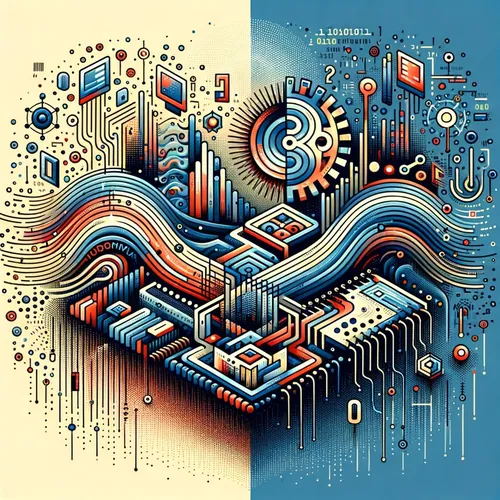Quantum Breakthroughs: Rosetta Stone Gates, Modular Scale, Neglectons Unleashed
- Author
- Quiet. Please
- Published
- Wed 27 Aug 2025
- Episode Link
- https://www.spreaker.com/episode/quantum-breakthroughs-rosetta-stone-gates-modular-scale-neglectons-unleashed--67531375
This is your Quantum Tech Updates podcast.
What a week to be living at the edge of the quantum frontier. I’m Leo, your Learning Enhanced Operator, and today’s Quantum Tech Updates comes to you from the center of the storm—a storm of breakthroughs. Picture this: earlier this week, at the Quantum Control Laboratory in Sydney, a shimmering ytterbium ion pulsed with quantum vibrations, each vibration neatly encoded with the legendary Gottesman-Kitaev-Preskill code. If classical bits are like flipping a coin heads or tails, GKP qubits are like holding the coin in a breeze—its position isn’t just up or down, but anywhere in between, and with error correction so elegant it’s called the Rosetta Stone of quantum computing. The Sydney team realized a universal logic gate in a single trapped atom, entangling quantum vibrations, slashing hardware requirements, and bringing practical quantum computers closer than ever. These gates aren’t just smaller—they’re fundamentally more efficient; it’s as if we squeezed an orchestra onto a single violin and still heard the entire symphony.
Now, let’s talk about modular scale: you don’t have to wait for perfect instruments to build a symphony. The University of California, Riverside, just simulated connecting multiple small, noisy quantum chips into a fault-tolerant super-system. Imagine assembling puzzle pieces with frayed edges and still seeing the full picture. Even when connection noise was ten times worse than chip noise, their distributed error correction held strong. Mohamed Shalby, first author, summed it up, “We don’t have to wait for perfect hardware to scale quantum computers.” Connect what you’ve got, patch up the errors, and build bigger quantum engines—right now.
Meanwhile, in Japan, there’s been a homegrown milestone: at Expo 2025 in Osaka, the first quantum computer built entirely with Japanese components is humming away at the University of Osaka’s Center for Quantum Information and Quantum Biology. Superconducting qubits cooled to near absolute zero, open-source software, and dazzling local materials—the system runs on an OQTOPUS toolchain, and the chip came from RIKEN. If classical computing is assembling imported machinery, quantum is becoming artisanal—each part crafted for coherence and precision, each operation a dance at the threshold of physics.
But sometimes, what we discard holds the key. On August 23, USC physicists showed that a neglected quasiparticle, nicknamed the neglecton, can transform Ising anyons—usually limited in computational scope—into universal operators for topological quantum computing. It’s a bit like finding treasure in what everyone else saw as mathematical garbage. By braiding these particles around one another, quantum information hides in structurally stable “rooms” while instability is quarantined. It’s math meeting hardware in a drama fit for the theater.
These milestones aren’t just technical—they're harbingers. The line between the lab and real-world impact vanishes daily. Hybrid quantum-classical AI models are powering new manufacturing and learning, and national quantum networks, like Vietnam’s VNQuantum, are stitching together minds and machines across continents.
The quantum future isn’t an abstract promise—it’s a living, breathing symphony played on hardware forged in extreme cold, vibrations trapped inside atoms, connections built on imperfect links, and particles resurrected from discarded theories. Thanks for tuning in to Quantum Tech Updates. If you have questions or want to hear your favorite topic on the show, email me at [email protected]. Subscribe for more, and remember, this has been a Quiet Please Production. For more, check out quietplease dot AI.
For more http://www.quietplease.ai
Get the best deals
